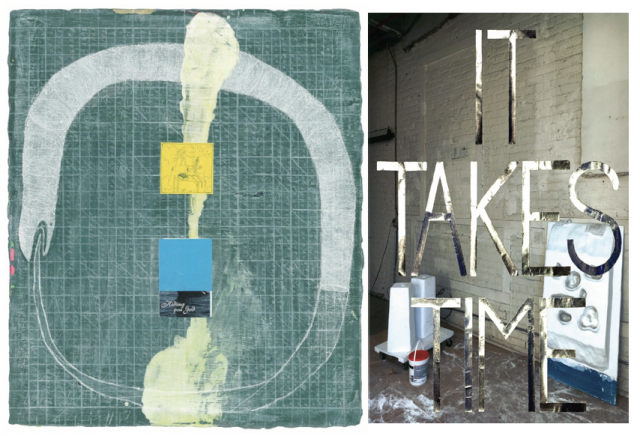University Galleries of Illinois State University is pleased to present Dianna Frid: IT TAKES TIME, Selected Works from 2009 through 2017 and Erin Washington: Light Touch, running through December 17, 2017.
IT TAKES TIME: Selected Works from 2009 through 2017 presents 55 works by Mexican-born, Chicago-based artist Dianna Frid. The exhibition title refers to the process of creating work, to the recursive cycles of life and death, and to the vast scale of geological time. Frid cites the cadences of reading, writing, sewing, breathing, and thinking as integral to her process. Her sculptures, collages, textiles, artist’s books, and installations are inspired by a range of sources—including poems by Lucretius, Vladimir Mayakovsky, and Dylan Thomas, texts and textile designs by Anni Albers, and carved hair and garments from classical Greek and Roman sculpture. Frid says she has “come to recognize how texts are sensuous experiences that embrace syntax but also exceed it through substance, color, and form.” Although her work “intersects with and borrows from written language,” she continues, “it also wrestles with language and its limits across the less verbal aspects of art and life.” Frid’s exhibition is organized by Senior Curator Kendra Paitz and co-sponsored by the Harold K. Sage Foundation and the Illinois State University Foundation Fund, and MECCPAC, a Dean of Students Office Diversity Initiative. Hilo de Vías, an exhibition of Frid’s artist’s books, will be on view at Milner Library from October 21 through December 17.
Erin Washington: Light Touch features new and recent collages, paintings, drawings, and sculpture by the Chicago-based artist. From a silverpoint portrait of the Egyptian queen Nefertiti to a chalk drawing of the presumed shape of a wormhole, Washington’s multilayered works consist of a medley of ambiguous scientific diagrams, art historical references, Post-it notes, studio debris, mythological figures, and self-deprecating jokes. Washington utilizes her panels in a similar way chalkboards have been historically used: as a temporary surface to present a lesson, theory, or problem. Though this approach situates Washington as a sort of teacher and the viewer as a student, she undermines this assumed authority by revealing her process: attaching Post-it notes of ideas instead of rendering the final product, writing critical notations on better aesthetic choices instead of changing them, or taping images of what inspired the piece to the surface instead of claiming authorship. Washington notes, “I always held tightly to the process of things: the process of telling a good story or the process of baking bread. I’m fascinated by the attention required for a series of incremental steps to produce a thing (a joke, a loaf, or a painting). Especially if the result is temporal, all that is left for grasping is the experience.” Washington’s exhibition is organized by Curator Jason Judd and co-sponsored by the Harold K. Sage Foundation and the Illinois State University Foundation Fund.

